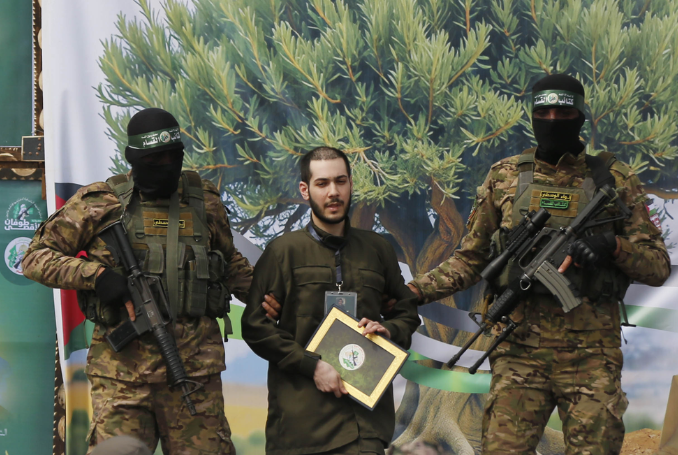
Israeli detainee Elijah Cohen, freed in a prisoner exchange, says he narrowly survived a tunnel collapse caused by an Israeli airstrike.
Israeli Channel 12 reported on Monday that Israeli detainee Elijah Cohen, recently released from Gaza, survived a tunnel collapse caused by an Israeli airstrike. Cohen recounted that the tunnel where he and other detainees were held was bombed, but they managed to escape just in time.
Cohen was one of six Israeli captives freed by the Al-Qassam Brigades last Saturday as part of the Al-Aqsa Flood exchange deal. The released captives are: Elijah Cohen, Omer Shem Tov, Omer Finkert, Tal Shoham, Avera Mengistu, and Hisham al-Sayed.
The Al-Qassam Brigades, the armed wing of the Palestinian Resistance Movement Hamas, transferred the captives to the International Committee of the Red Cross in three locations: Rafah in southern Gaza, the Nuseirat refugee camp in the central region, and Gaza City.
This release marked the seventh batch in the first phase of the exchange deal, which included the handover of six Israeli detainees, two of whom had been in captivity since 2014. The deal was part of the ceasefire agreement that took effect on January 19.
Eliya Cohen, recently released by Hamas, says he narrowly survived when the tunnel he was held in collapsed after an Israeli airstrike, according to Channel 12. #Gaza #Israel #Prisoners pic.twitter.com/iAYTXjnDEH
— The Palestine Chronicle (@PalestineChron) February 24, 2025
At the Nuseirat camp, Al-Qassam handed over three detainees to the Red Cross after signing the official transfer documents. During the handover, an Israeli detainee was seen kissing the heads of two Qassam members on the platform.
In Rafah, two captives were released, including Tal Shoham, whom Al-Qassam identified as a member of the Israeli intelligence agency (Mossad), and Avera Mengistu, who had been held since 2014. The customary handover ceremony was omitted for Hisham al-Sayed out of respect for Palestinians living in areas occupied in 1948.
This marked the final release of living detainees in the first phase of the exchange, with the bodies of four Israeli detainees still expected to be transferred.
Hamas Condemns Israel’s Delay in Prisoner Swap, Calls on Mediators to Intervene
In return, Israeli authorities suspended the release of 596 Palestinian prisoners, including 50 serving life sentences, 60 with long-term sentences, 41 who had been rearrested after their 2011 release in the “Wafa al-Ahrar” (Gilad Shalit) deal, and 445 detainees from Gaza arrested after October 7, 2023.
The ceasefire and prisoner exchange agreement, which began on January 19, consists of three phases, each lasting 42 days. Negotiations are set to take place in the first phase to determine the next steps. The agreement initially outlined the gradual release of 33 Israeli detainees from Gaza, alive or dead, in exchange for 1,700 to 2,000 Palestinian prisoners.
Between October 7, 2023, and January 19, 2025, Israeli forces, with US backing, carried out military operations in Gaza, resulting in over 160,000 Palestinian deaths and injuries, including a majority of women and children, with more than 14,000 people reported missing.
(PC, AJA)